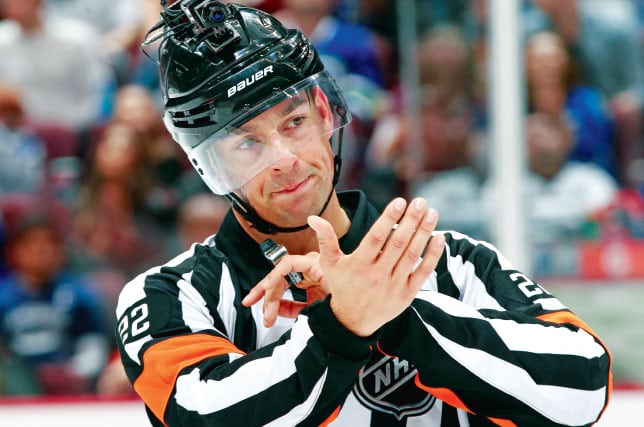
New technology will transform how fans watch hockey
HDTV? That’s so 2008. Technology will deliver viewers 4K resolution, cutting edge statistics and unprecedented choice of how and when to watch.
 New technology will transform how fans watch hockey
New technology will transform how fans watch hockeyForget HD resolution or viewing parties on massive projector screens. It won’t be long until fans will feel as though they’re sitting front and center ice rather than lounging on their tired sofas, cold beers in hand. At least that’s the virtual future now being presented at conferences across North America, where participants are plunked right into the thick of the game via a headset and clever camera angles. “4K resolution seems like the next move in camera coverage, although the Japanese I think are just going to go right to 8K – that’s what they’re planning on doing for the Olympics as the host broadcaster,” said John McGuinness, co-ordinating producer, Hockey on NBC and NBCSN. “Any time you can make it easier for the viewer to see, a sport like hockey could definitely benefit from it because of the old, ‘I can’t see the puck’ argument.”
The rapid transformation of the way viewers consume their hockey has been a long time coming. With Rogers taking over the NHL deal in Canada and working in tandem with NBC Sports and TVA, there have been many broadcast experiments with Q-balls, rail cams and even the ref cam. Online, a future where viewers pick which broadcast – home or away – to watch, complete with color from their favorite commentators and a view from their preferred camera angle is possible. “Favorite screen” will replace “best screen,” as TV execs like to say. “Hockey will look as different in 2025 as it does in 2015 compared to 2005,” said Scott Moore, President of Sportsnet and NHL at Rogers. “Back then we were really just getting into HD. You’ll see evolutionary choice and ability for the consumer and the sports fan to watch it in the way they want to watch, not just when and on what platform they want to watch.” Meanwhile, Moore said cost-cutting ventures could begin to emulate Olympic strategies, with producers and editors hanging back in a central location and only cameramen travelling to games. Those savings could translate into more R&D investment. “Innovation investment will always be important,” said Mark Milliere, TSN’s senior VP of production. “The industry continues to evolve, and it’s important to stay on top of the trends and constantly evaluate what makes sense for your business.” In the U.S., the NFL is a frontrunner in innovative graphics aimed at enhancing the viewer experience. Tracking measurements designed to display how far a certain player has run or how hard he’s thrown a ball are being experimented with and have slowly found their way to hockey with last year’s NHL All- Star Game. Updated versions of those tracking tools and on-screen graphics could be headed to the NHL in the next few years. “Player tracking will reach hockey soon, where a player like P.K. Subban will have a chip on him so you can see how fast he’s skating or what distance he’s skated in one period,” said Louis-Philippe Neveu, TVA Sports’ executive producer of hockey. “There will be advanced stats that are not available right now, and graphics showing stuff you see in the NFL. It’s pretty cool. In the next 10 years every network will have it.”
This is an edited version of a feature that appeared in the September 14 edition of The Hockey News magazine. Get in-depth features like this one, and much more, by subscribing now.
